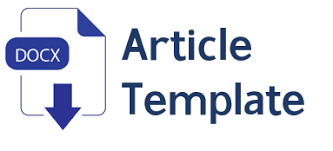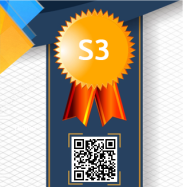LEARNING STRATEGY: IDENTIFYING STRATEGY USED BY LANGUAGE LEARNERS (FOR TOEFL, IELTS, AND GLOBAL ENGLISH LEARNERS)
Abstract
Keywords
Full Text:
PDFReferences
Arulselvi, M. E. (2016). LEARNING STRATEGY TRAINING IN ENGLISH TEACHING. i-manager’s Journal on English Language Teaching, 6(1), 1-7.
Chamot, A. U. (2004). Issue in Language Learning Strategy Research and Teaching Electronic Journal of Foreign Language Teaching, 1(1), 14-26. doi: http://e-flt.nus.edu.sg/.
Chamot, A. U. (2005). Language Learning Strategy Instruction: Current Issue and Research. Annual Review of Applied Linguistics 25, 112-130. doi: https://doi.org/10.1017/S0267190505000061.
Cheng, H.-Y. (2015). Effects of Language Learning Strategies and Learners’ Motivation on Students’ Learning Achievement. International Journal of English Language Education 3(2).
Dörnëy, Z. (2005). The Psychology of The Language Learners. New Jersey, London: Lawrence Elrbaum Associted, Inc.
ETS. (2016). How to Prepare for The Next Generation TOEFL Test and Communicate Competence
Georgescu, C. U. C. A. (2012). Learners' Strategies in Language Learning Procedia Social and Behavioral Sciences(46), 5000-5004. doi: 10.1016/j.sbspro.2012.06.375.
Griffiths, C. (2003b). Language learning strategy use and proficiency: The relationship between patterns of reported language learning strategy (LLS) use by speakers of other languages (SOL) and proficiency with implications for the teaching/learning situation. Doctor of Philosophy University of Auckland .
Griffiths, C. (2010). Strategies of Successful Language Learners. JELS, 1(3), 1-18.
Griffiths, C. (Ed.). (2008). Lessons form Good Language Learners. United States, New York: Cambridge University Press.
Guun, V. (2007). Approaches to Small Group Teaching and Learning. University of Glasgow: Learning and Teaching Center, University of Glasgow.
Ho, G. A. L. (2011). Understanding Good Language Learners of Vietnameseas a Foreign Language. Electronic Journal for Foreign Language Teaching, 8(2), 392.
IELTS. (2017). IELTS: Demographic Data 2015 .
Jordan, C. G. D. (2005). Strategies for Success in IELTS.
Maalouf, J. P. (2016). Introduction to descriptive statistics.
Mahalingam, K. (2016). Good Language Learners and Their Strategies: An Insight. [Proceeding]. Proceeding of ICECRS, 1(2016), 359-366. doi: http://dx.doi.org/10.21070/picecrs.v1i1.504.
Mahmud, M. (2014). The EFL Students’ Problems in Answering the Test of English as a Foreign Language (TOEFL): A Study in Indonesian Context. Theory and Practice in Language Studies,, 4(12), 2581-2587. doi: 10.4304/tpls.4.12.2581-2587.
Mattarima, K. (2011). Learners’ Motivation and Learning Strategies in English Foreign Language (EFL) in Indonesian Context. Journal of Edupres, 1, 100-108.
Oxford, R. L. (1996). Employing a Questionnaire to Assess The Use of Language Learning Strategies. Applied Langauge Learning, 7(1), 22-45.
Oxford, R. L. (2003). Language learning styles and strategies: An overviewlearning style and strategies: Oxford, GALA.
Postholm, M. B. (2010). Self-Regulated Pupils in Teaching: Teachers’ Experiences. Teachers and Teaching: Theory and Practice, 16(4), 491-505. doi: http://www.tandfonline.com/loi/ctat20.
Ruba, H., Habiba, U., Amir, A., Aslam, A., & Kiran, S. (2014). Strategy Inventory for Language Learning European Journal of Psychological Research, 1(1), 10-27.
Sungatullina, D. D. (2016). Metacognitive Awareness of TOEFL Reading Comprehension Strategies. EPRA 2015. doi: 10.1051/shsconf/20162601046 SHS Web of Conferences 26.
Surgenor, P. (2010). Large and Small Group Teaching. UCD Dublin.
Zhengdong, G. (2009). IELTS Preparation Course and Student IELTS Performance: A Case Study in Hong Kong. RELC, 4(1), 23-41. doi: 10.1177/0033688208101449.
DOI: http://dx.doi.org/10.22373/jid.v18i2.3240
Refbacks
- There are currently no refbacks.
except where otherwise noted.



